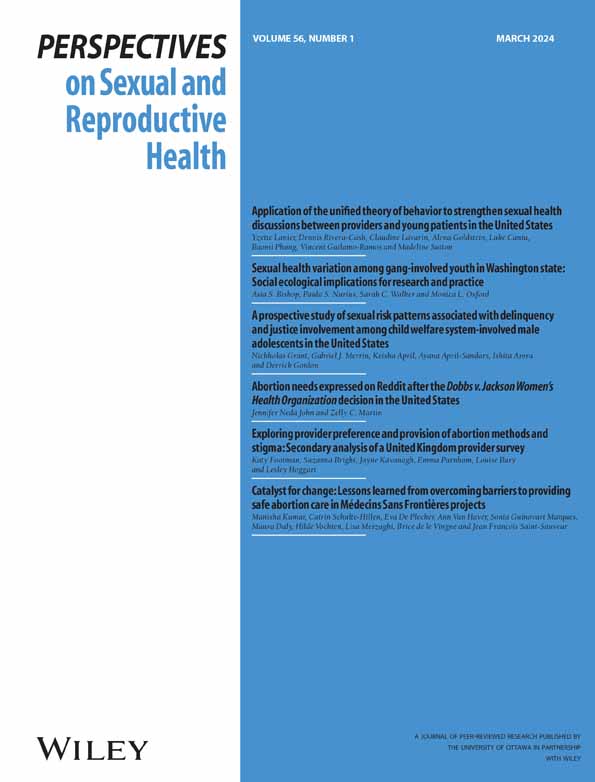一个人可以既支持生命又支持选择吗?美国成年人全国调查的结果。
IF 3.4
2区 医学
Q1 DEMOGRAPHY
引用次数: 0
摘要
"支持生命 "和 "支持选择 "与有关堕胎的讨论密切相关;我们将人们对这两个词的认同程度称为 "堕胎认同"。我们对美国成年人(n = 580)进行了一项调查,其中包括两种不同的形式供参与者选择其堕胎身份:一种是分类项目,回答选项从强烈支持堕胎到强烈支持堕胎(以及 "都支持 "和 "都不支持");另一种是两个独立的项目(滑块),询问人们对每个术语的认同程度。我们要求在滑块项目中在某种程度上既支持生命又支持选择的参与者在开放式项目中解释他们的回答。我们使用逻辑回归法研究了参与者的社会人口特征与双重认同滑块得分之间的关系;我们对开放式数据的内容和主题进行了分析。人们在封闭式项目中的堕胎认同与他们对开放式问题的回答之间存在差异。在具有混合堕胎身份的参与者中,堕胎被描述为一种严重的、不可取的选择,但对个人选择和身体自主的概念却有积极的反映。我们建议制定更细致、更一致的方法来评估堕胎态度。本文章由计算机程序翻译,如有差异,请以英文原文为准。
Can someone be both pro-life and pro-choice? Results from a national survey of US adults.
"Pro-life" and "pro-choice" are closely associated with discussions about abortion; we refer to the extent that people identify with these terms as "abortion identity." Most polling measures present pro-life and pro-choice as mutually exclusive options, but there is a dearth of information about people who might simultaneously endorse both (or neither) labels.
METHOD
We administered a survey to adults in the United States (n = 580) that included two different formats for participants to select their abortion identity: a categorical item with response options ranging from strongly pro-choice to strongly pro-life (and "both" and "neither") and two separate items (sliders) that asked people the extent to which they identify with each term. We asked participants endorsing both pro-life and pro-choice to some extent on the slider items to explain their responses in an open-ended item. We used logistic regression to examine the relationship between participants' socio-demographic characteristics and the likelihood of dual identification slider scores; we analyzed open-ended data for content and themes.
RESULTS
On the sliders, more than 64% of participants identified as both pro-life and pro-choice to some extent. Variability existed between people's abortion identity on the close-ended items and their response to the open-ended questions. Among those with mixed abortion identities, participants described abortion as a serious and undesirable option but reflected positively on notions of personal choice and bodily autonomy.
CONCLUSIONS
Our findings demonstrate complexity in measuring people's endorsement of abortion identity labels. We recommend developing more nuanced and consistent measures to assess abortion attitudes.
求助全文
通过发布文献求助,成功后即可免费获取论文全文。
去求助
来源期刊
CiteScore
5.10
自引率
3.40%
发文量
24
期刊介绍:
Perspectives on Sexual and Reproductive Health provides the latest peer-reviewed, policy-relevant research and analysis on sexual and reproductive health and rights in the United States and other developed countries. For more than four decades, Perspectives has offered unique insights into how reproductive health issues relate to one another; how they are affected by policies and programs; and their implications for individuals and societies. Published four times a year, Perspectives on Sexual and Reproductive Health includes original research, special reports and commentaries on the latest developments in the field of sexual and reproductive health, as well as staff-written summaries of recent findings in the field.

 求助内容:
求助内容: 应助结果提醒方式:
应助结果提醒方式:


